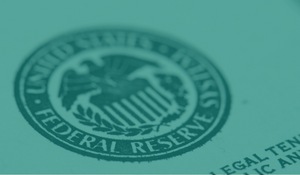Often considered an important indicator of our economic future, the yield curve has experienced a...
Stop the party, the Fed’s not done yet
Deeper dives into prices and worker pay show that the war against inflation is not yet won.
There was some good news recently in the fight against higher prices, as inflation was reported to have eased off slightly from a 40-year high.
The report was met with celebration by some, as it reveals relief from the breakneck price increases as of late. But some are also celebrating because they see these numbers having favorable implications for the Fed’s plan for the economy. Unfortunately, there’s more to the story.
Recently the Fed has been trying to tackle inflation by slowing the economy with higher interest rates. The goal is to do so without creating the pain that typically comes with a slower economy, like recession and unemployment.
The Fed’s initial attempts were ineffective, so it started implementing a more aggressive path that increased the risk of economic pain, which was scary. Now that inflation seems to be easing, many hope that the Fed will scale back its plan and lessen the chance of an economic downturn.
But a deeper dive into the data shows that trouble still lurks, meaning the Fed is unlikely to abandon its aggressive interest rate policy any time soon. There are two big reasons why: core inflation and worker pay.
When newspapers report inflation they use a measure called the Consumer Price Index, or “CPI”, which accounts for the price of all goods and services—we call this measure headline inflation. But economists are also interested in another version of the measure called core inflation, which removes food and energy prices from the calculation.
It might seem curious to leave out food and energy, as these are important parts of household budgets. When prices for these goods go up, people feel it. But food and energy prices are also the most likely to fluctuate—grocery and gas prices can jump higher or fall lower at the drop of a hat.
On the other hand, the prices of other goods and services tend to be steadier—if prices for cars or clothes or healthcare go up, they tend to stay there. That’s why policymakers pay such close attention to the core measure of inflation.
Core inflation has eased from recent highs just like its headline counterpart. But the core measure remains at uncomfortably high levels, and the Fed is likely to be sensitive to that in its inflation battle.
The other trouble has to do with an important measure of worker pay called unit labor cost. This measure expands on wages by factoring in what was paid for what was made. It acts as an important gauge of how much wage increases might be contributing to inflation.
Recent data show that unit labor costs are high. Really high. They’re at their highest level in 40 years and unlike the inflation measures discussed above they’ve shown no sign of relief.
Higher unit labor costs mean more potential wage-based inflation. This is a scary thought because policymakers have only been able to tackle this type of inflation in the past by inflicting significant economic pain, like in the mid-1970s and early 1980s.
With an aggressive plan already in place, the Fed is unlikely to ease off its interest rate hikes knowing that the potential for a nasty wage-based inflation crisis like we saw 40 years ago has increased in the last few months.
Simply put, we are hardly out of the danger zone with inflation. The Fed will hopefully have a clearer picture before its next meeting in late September, but it would be unwise to expect a significant change of course in its fight against inflation based on our current state.
Stay tuned, more to come.
-1.png?width=50&name=Untitled%20design%20(32)-1.png)

%20(1)-2.png?height=200&name=Untitled%20(300%20%C3%97%20175%20px)%20(1)-2.png)

